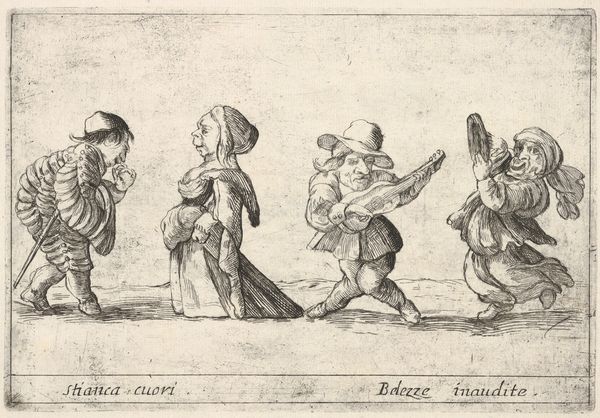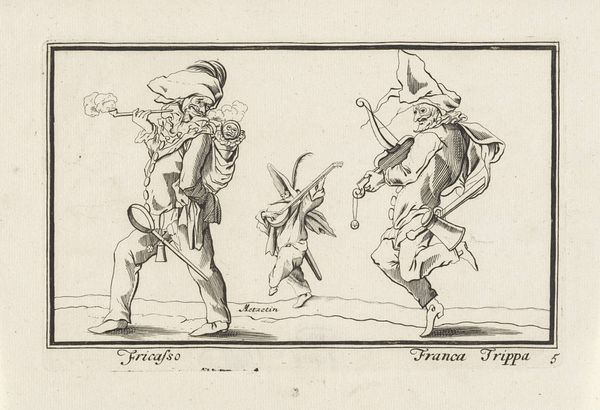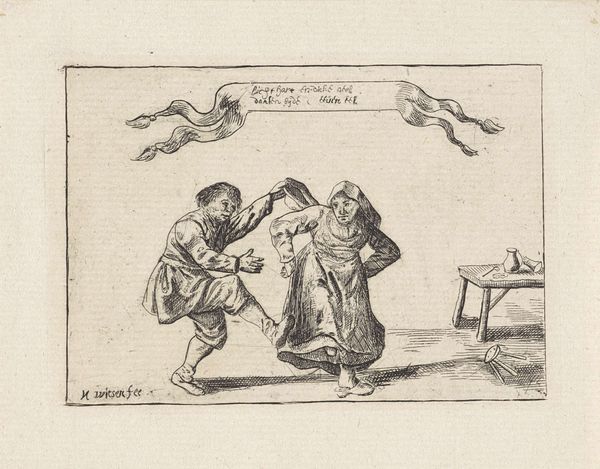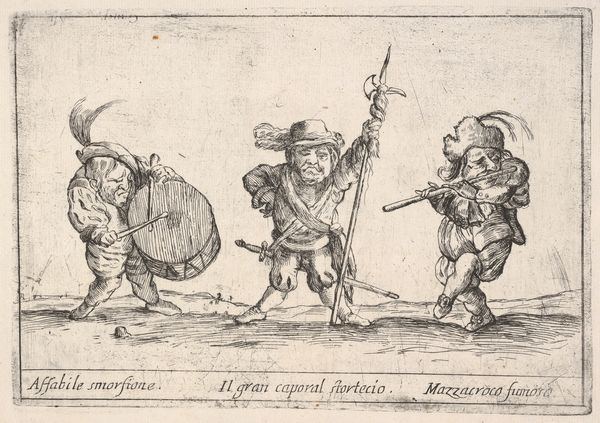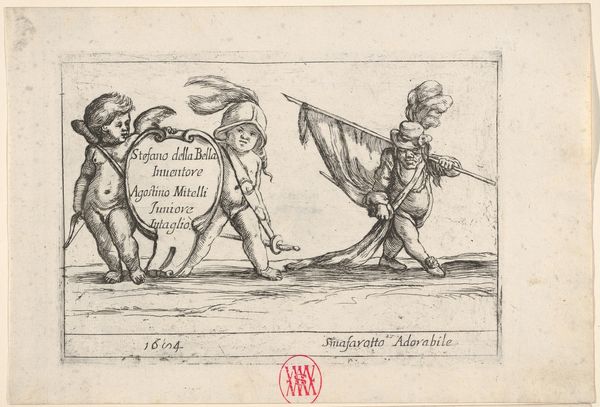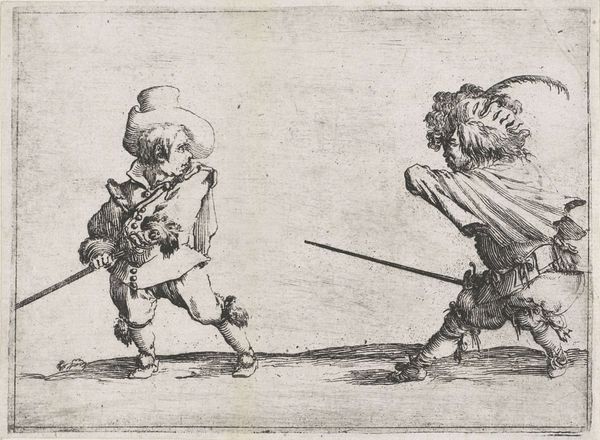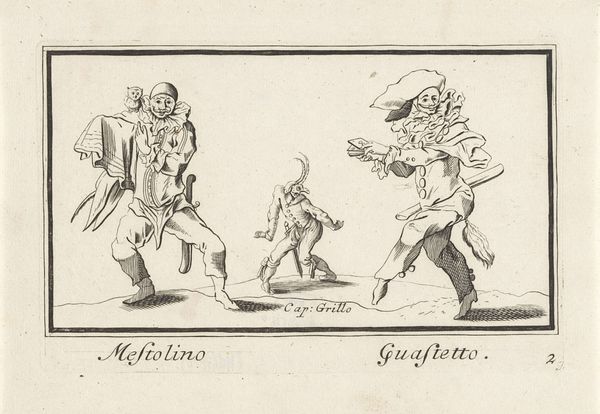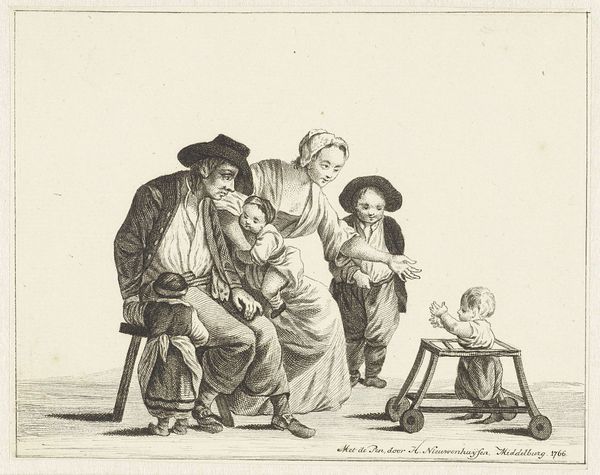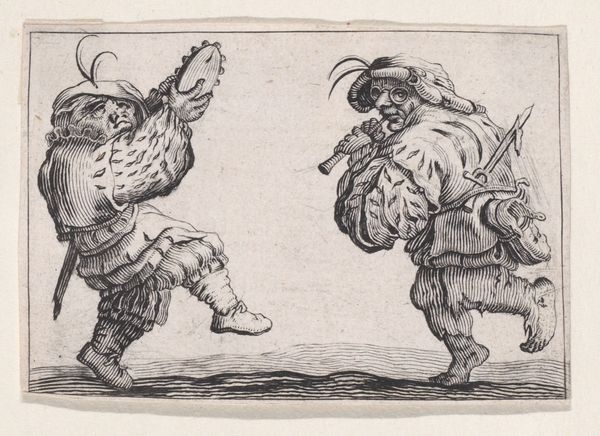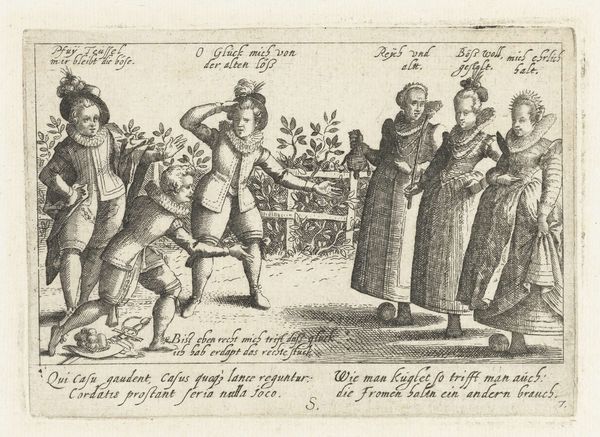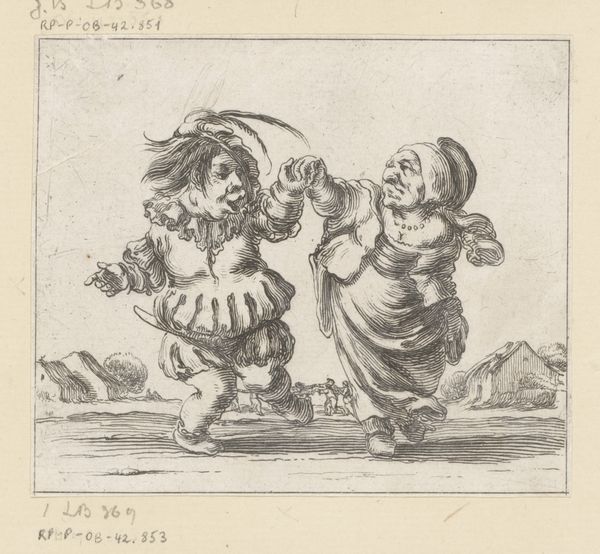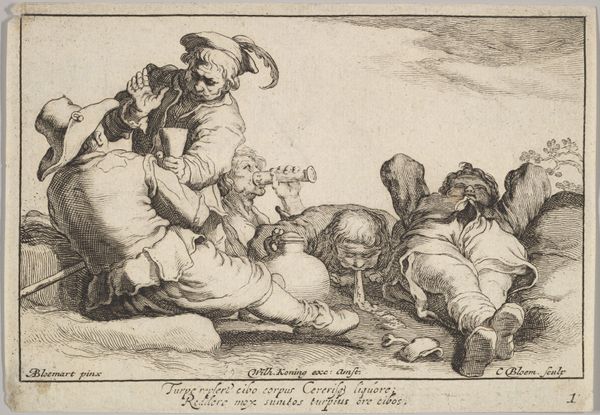
Callot figures; an old dwarf woman dancing with a young dwarf man to left, an old dwarf man touching the shoulder of a young, smiling dwarf woman, from 'Six grotesques' (Six pièces de figures grotesques) 1684
0:00
0:00
drawing, print, engraving
#
drawing
#
baroque
# print
#
pen sketch
#
caricature
#
figuration
#
genre-painting
#
engraving
Dimensions: plate: 5 7/16 x 7 11/16 in. (13.8 x 19.5 cm) sheet: 6 7/8 x 10 1/16 in. (17.4 x 25.5 cm)
Copyright: Public Domain
Editor: Here we have Agostino Mitelli II’s 1684 engraving, "Callot figures; an old dwarf woman dancing with a young dwarf man to left, an old dwarf man touching the shoulder of a young, smiling dwarf woman, from 'Six grotesques'". The lines are so fine, it's fascinating! But the image itself makes me feel a bit uncomfortable… what’s your take? Curator: That discomfort is a valid entry point. Mitelli's work exists within a historical context where representations of marginalized groups were often exploitative. How do you think this image engages with ideas around physical difference, and perhaps even class and power dynamics, during the Baroque period? Editor: So, you're saying these "grotesque" figures aren’t just quirky characters, but they reflect societal biases? It does feel like they’re being put on display somehow. Curator: Exactly. Think about the role of the court jester, or the "freak show" – spaces where individuals deemed different were simultaneously mocked and consumed. Are the figures granted any agency here, or are they purely objects of spectacle? Consider the performative nature of the scene - are they acting for an audience, and who might that audience be? Editor: I hadn’t thought of it that way. The phrases underneath the characters – "legiadrissimi amanti" and "sdegnata scarronosa," which roughly translate to graceful lovers and disdainful scarecrow – almost sound sarcastic given how they're presented. Curator: Precisely! How might we interpret this contrast between text and image through a critical lens? Does Mitelli perpetuate harmful stereotypes, or is he offering a subtle critique of his own society’s prejudices? Is he inviting us to reflect on who gets to be beautiful, who gets to love, and who gets to be seen as human? Editor: It’s way more complex than I first thought. It sounds like what Mitelli includes—and excludes—might expose Baroque attitudes toward difference. Thank you, I appreciate the new perspective! Curator: My pleasure. Looking closely unveils how art serves as a time capsule of social attitudes. I hope it gave you something to think about!
Comments
No comments
Be the first to comment and join the conversation on the ultimate creative platform.
